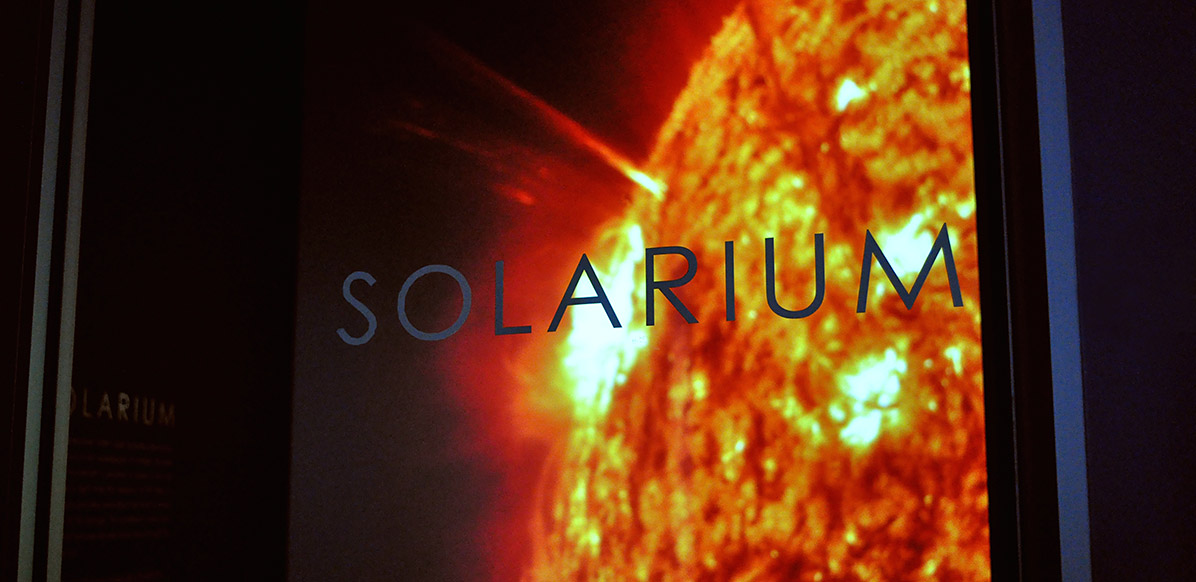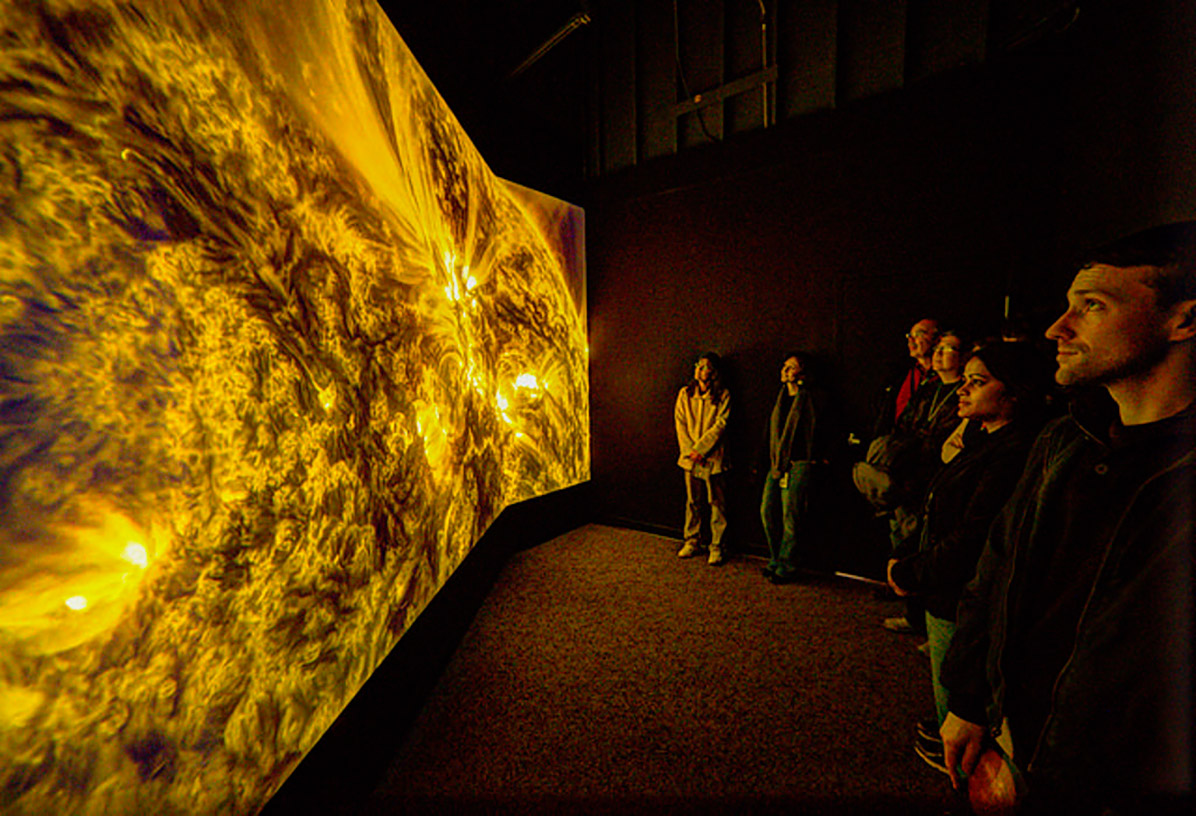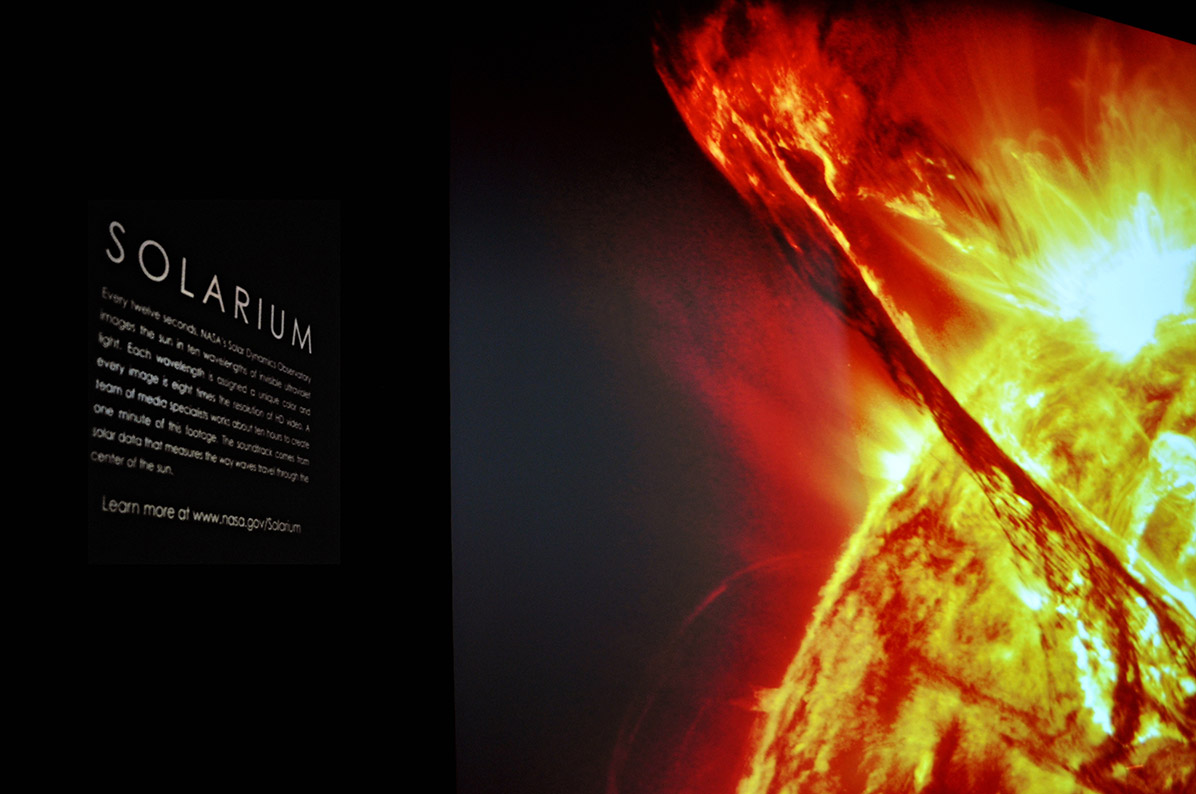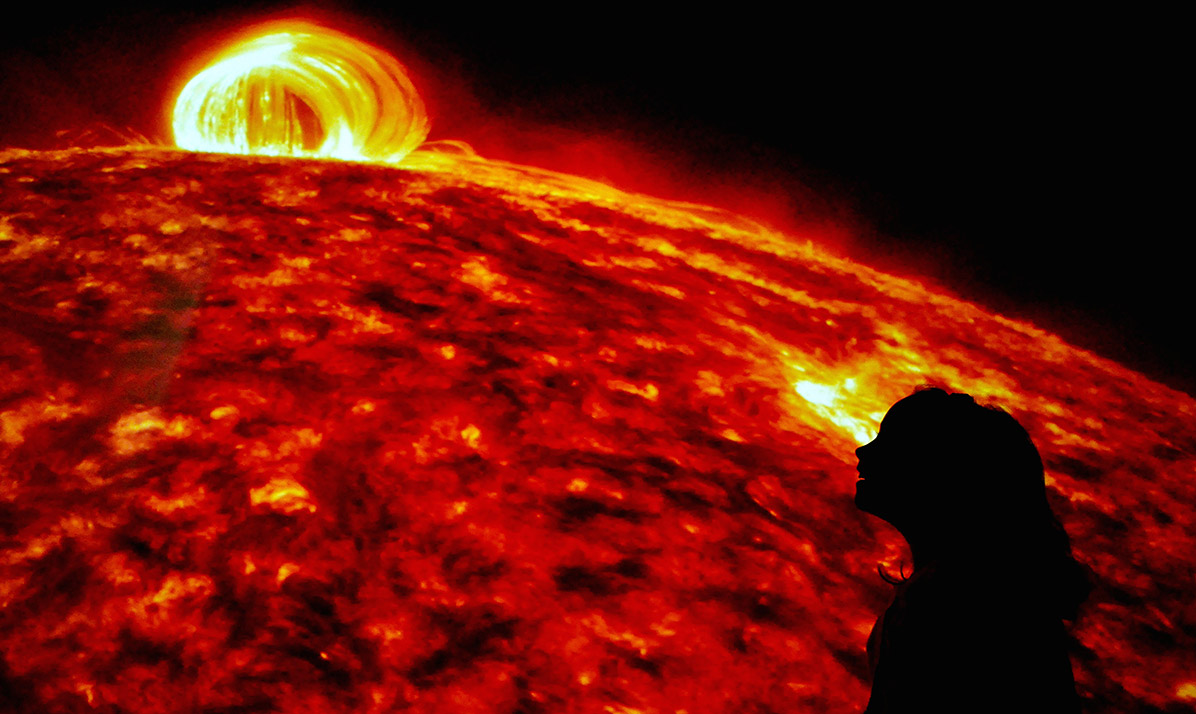SOUNDS OF THE SUN
We can hear the Sun’s movement — all of its waves, loops and eruptions — with our own ears.
C. Alex Young explains what you’re hearing from the sun.
Data from ESA and NASA’s Solar and Heliospheric Observatory (SOHO) has captured the dynamic movement of the Sun’s atmosphere for over 20 years. The sound from the sun helps scientists study what can’t be observed with the naked eye.
“Waves are traveling and bouncing around inside the Sun, and if your eyes were sensitive enough they could actually see this,” said Alex Young, associate director for science in the Heliophysics Science Division at NASA’s Goddard Space Flight Center in Greenbelt, Maryland.
Data from SOHO, sonified by the Stanford Experimental Physics Lab, captures the Sun’s natural vibrations and provides scientists with a concrete representation of its dynamic movements.
“We don’t have straightforward ways to look inside the Sun. We don’t have a microscope to zoom inside the Sun,” Young said. “So using a star or the Sun’s vibrations allows us to see inside of it.”
These vibrations allow scientists to study a range of complex motions inside the Sun, from solar flares to coronal mass ejections.
“We can see huge rivers of solar material flowing around. We are finally starting to understand the layers of the Sun and the complexity,” Young said. “That simple sound is giving us a probe inside of a star. I think that’s a pretty cool thing.”
The sounds of the Sun are on display at the NASA Goddard Visitor Center in Greenbelt, Maryland. An immersive art installation, called Solarium, uses vivid imagery and sonification to transport listeners to the heart of our solar system.
CREDIT: NASA’s Goddard Space Flight Center
Micheala Sosby (NASA/GSFC): Lead Producer
Katie Atkinson (GSFC Interns): Lead Producer
C. Alex Young (NASA/GSFC): Narrator
Aaron E. Lepsch (ADNET Systems Inc.): Technical Support
Music: “Flow” by Lee Rosevere
Click below to listen to the sun!
Experience the sounds & images of the Sun with Solarium — an innovative piece of video art that puts you directly in the heart of this mesmerizing show!
Solarium taps into a vast reservoir of imagery from NASA’s Solar Dynamics Observatory.
SDO watches ultratraviolet light invisible to the naked eye to track how material dances through the solar atmosphere. SDO takes a picture almost once a second — no other solar observatory has ever collected data on the entire sun at the speeds with which SDO does. Each image has eight times as much resolution as an HD TV.
graphical mock-up of Solarium installationScientists use SDO to trace how material courses through the layers of the solar atmosphere, the corona, powering gigantic burst of x-rays called solar flares and eruptions of solar particles that swirl upward and fall back down — or sometimes escape the sun’s gravity altogether, surging out into space. The observatory records the solar images as a binary code, ones and zeros, which computer programs can translate into black-and-white pictures. Scientists colorize the images for realism, and then zoom in on areas of interest.
Each of SDO’s colors relate to a wavelength of ultraviolet light, which in turn relates to a specific temperature of material on the sun. Each color highlights different events on the sun, for example teal is best for seeing flares, and yellow is best for seeing the majestic loops hovering in the sun’s atmosphere.
To scientists, SDO provides unprecedented information on the star we live with; to the rest of us, it provides breathtaking images. Solarium makes viewers stop and stare, instantly transported from where they had been moments earlier.




Click on an image below to view larger.
CREDIT: NASA’s Goddard Space Flight Center
Genna Duberstein (USRA): Lead Producer
Scott Wiessinger (USRA): Producer
Karen Fox (ASI): Science Writer
Tom Bridgman (GST): Data Visualizer
Music: “Flow” by Lee Rosevere

